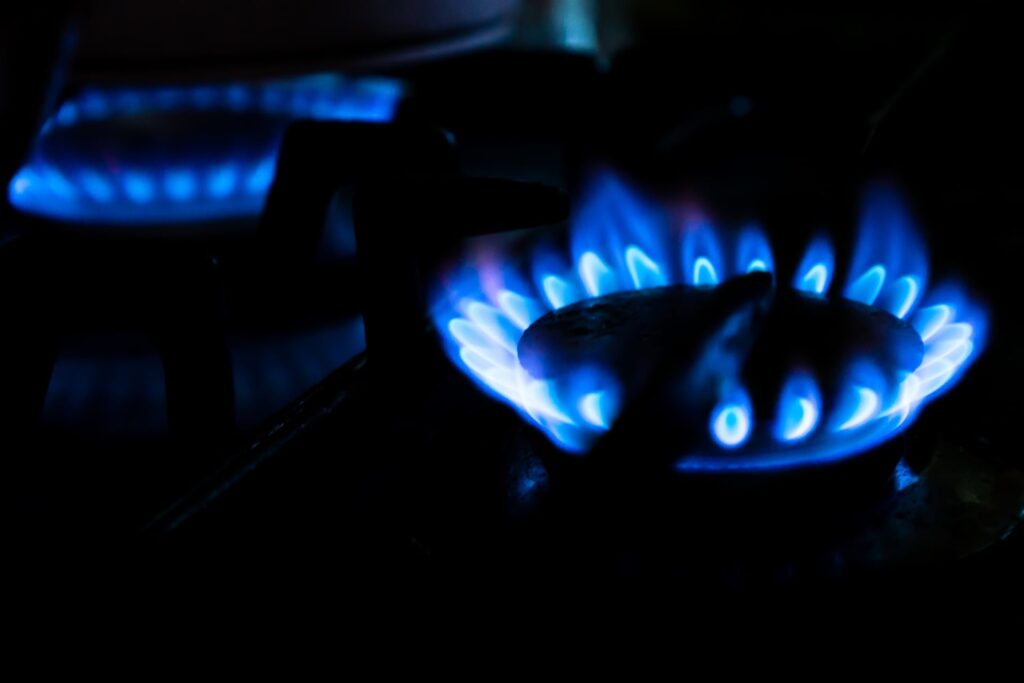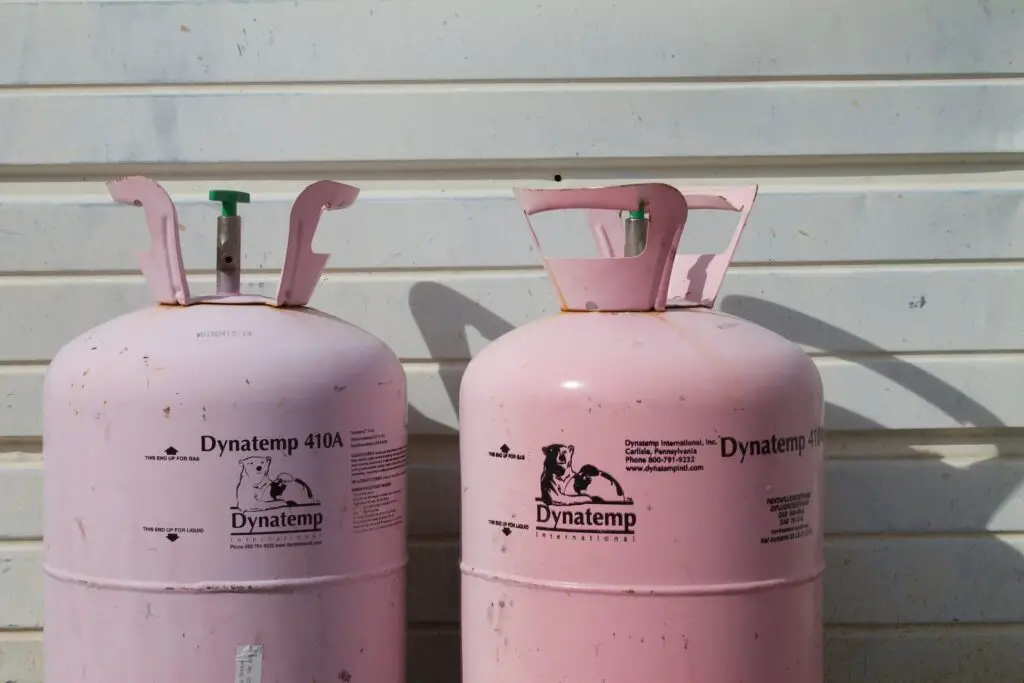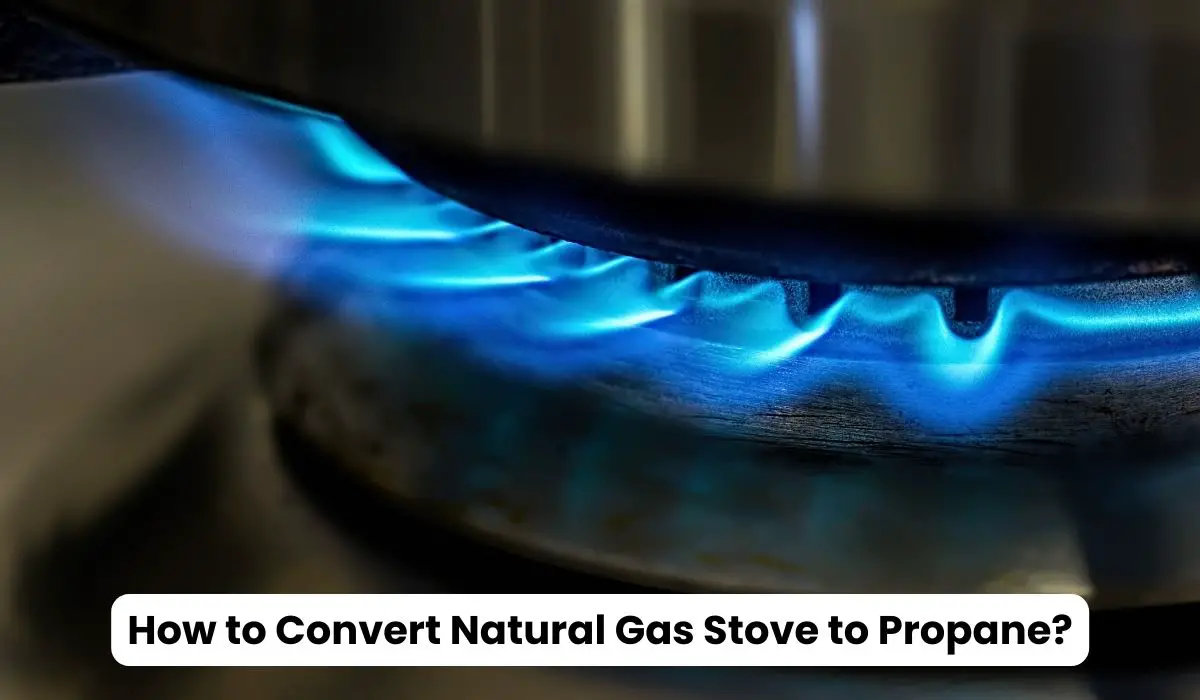If you have a natural gas stove but want the flexibility of using propane, you’re in the right place. Converting your natural gas stove to propane is a practical option that allows you to cook even when the natural gas supply is unavailable. In this guide, we will walk you through the step-by-step process of converting your natural gas stove to propane, ensuring you can enjoy the benefits of both fuel types with ease.
By the end of this article, you’ll have all the knowledge you need to confidently embark on this DIY project, saving time and money on professional assistance.
So let’s explore the ins and outs of transforming your cooking appliance to suit your propane needs.
Table of Contents
Understanding Natural Gas and Propane:

Household stoves often make use of natural gas and propane as fuels. Utility pipelines supply natural gas, which is mainly composed of methane.
Propane is a form of liquefied petroleum gas that is typically kept in tanks. Although propane and natural gas are efficient and cost-effective, propane is more portable. It is often preferred in rural areas without access to natural gas pipelines.
Reasons for Converting to Propane:
There are various reasons why one may contemplate switching their natural gas stove to propane:
1. Portability
Using propane can enable you to operate your stove in locations without natural gas supply lines, like during camping trips or in rural areas.
2. Emergency Preparedness
In a natural gas outage, having a propane stove ensures you can still cook and prepare meals.
3. Cost-Effective
Propane prices can be more stable than natural gas, offering potential cost savings.
4. Instant Heat and Precise Control
One of the primary advantages of propane gas stoves is their ability to provide instant heat. As soon as you turn on the burner, you’ll experience quick and consistent heat production. This feature is particularly beneficial for busy cooks who must prepare their meals in a snap.
With propane stoves, you can have complete control over the flame. You can easily adjust the heat to reach your desired temperature, allowing precise simmering, sautéing, or boiling. This level of control assures that your meals will turn out perfectly cooked every time.
Safety Precautions Before Conversion:
Before starting the conversion process, safety should be your top priority. Follow these precautions:
- Turn Off the Gas Supply: Turn off the natural gas supply to the stove to avoid leaks or accidents.
- Ventilation: Ensure proper ventilation in the kitchen area to prevent the accumulation of gas fumes.
- Inspect the Stove: Before starting the conversion, inspect the stove for any damage or signs of wear and tear.
Tools and Materials Needed:

To convert your natural gas stove to propane, gather the following tools and materials:
- Adjustable wrench
- Propane conversion kit
- Pipe joint compound
- Leak detection solution
How to Convert Natural Gas Stove to Propane:

1. Turning Off the Gas Supply
To start, turn off the natural gas supply for the stove. Find the gas shut-off valve and turn it clockwise until completely closed.
2. Detaching the Gas Lines
Carefully detach the gas lines from the stove using an adjustable wrench. Be cautious to avoid any damage to the connections.
3. Changing Burner Orifices
Remove the existing natural gas burner orifices and replace them with the ones provided in the propane conversion kit. These orifices regulate the gas flow and are designed explicitly for propane.
4. Adjusting the Regulator
Adjust the stove’s pressure regulator to accommodate the propane gas. Follow the manufacturer’s instructions for this step, which may vary depending on the stove model.
5. Checking for Leaks
Apply a leak detection solution to the gas connections and joints to prevent leaks. If bubbles form, a leak needs to be fixed before proceeding.
Testing the Propane Conversion:
After completing the conversion, testing the stove for proper functionality is essential. Turn on the gas supply and ignite the burners, checking for irregularities or unusual smells. If everything appears normal, the conversion was successful.
How Do You Hook Up a Gas Stove to Propane?
Propane vs Natural Gas: Which is the Better Choice?
When choosing between propane and natural gas, homeowners and businesses often face a dilemma. Both fuels have their merits and drawbacks, making the decision more challenging. Below, we’ll explore the key differences between propane and natural gas, shedding light on their strengths to help you make an informed choice.
If you’re interested in understanding the ventilation requirements for a gas stove, check out our article on the type of venting required for a gas stove for valuable insights.
1. Energy Efficiency
In terms of energy efficiency, propane takes the lead. Propane has a higher energy content per cubic foot than natural gas, resulting in greater heat output. This means propane-powered appliances perform better and offer greater energy efficiency than their natural gas counterparts. Propane could be the better option if you want to reduce your energy bills and minimize your carbon footprint.
2. Eco-Friendliness
Regarding environmental impact, natural gas has an advantage over propane. Natural gas is considered a cleaner-burning fuel, emitting lower carbon dioxide levels and other greenhouse gases. However, propane is just a little behind; it still produces significantly fewer emissions than other fossil fuels like coal or oil. If environmental concerns are at the forefront of your decision-making process, natural gas might be the more eco-friendly.
3. Cost Considerations
Cost is a crucial factor for many consumers. In terms of upfront costs, natural gas typically comes out on top. Natural gas infrastructure is often already in place in urban areas, making it more accessible and affordable to connect to a natural gas supply. On the other hand, propane may require the installation of storage tanks and additional safety measures, which can increase the initial investment.
4. Supply and Accessibility
The availability of propane and natural gas can vary depending on your location. While natural gas is usually more accessible in urban and suburban areas due to established pipelines, rural areas may lack the infrastructure needed for natural gas supply. Propane offers a viable alternative since it can be transported and stored more easily. Propane’s versatility makes it preferable for remote locations or areas with limited natural gas availability.
5. Versatility
Propane and natural gas cater to different applications. Propane is commonly used for outdoor applications, such as grilling, camping, and heating swimming pools. It is also famous for powering backup generators. On the other hand, natural gas is predominantly used indoors, such as heating homes and powering kitchen appliances. Consider the specific requirements of your applications to determine which fuel suits your needs better.
Is Propane Gas Suitable For Stoves?
Yes, Propane Gas is Suitable for Stoves. When choosing the right fuel for your stove, propane gas emerges as a reliable and efficient option. Propane, a prevalent liquefied petroleum gas, has gained widespread acceptance as a versatile fuel source, especially for stoves in various settings.
How Big of a Propane Tank Do I Need for a Stove?

Selecting your stove’s fitting propane tank size ensures a smooth and uninterrupted cooking experience. Propane is a versatile, clean-burning fuel that powers many household stoves and ranges. It is crucial to find the appropriate tank size, whether using it for your primary cooking source or as a backup during power outages.
1. Consider Your Cooking Habits
To determine the right propane tank size, think about how often you cook and the types of dishes you prepare. A smaller tank may suffice if you’re an occasional cook who uses the stove for light meals. However, a larger tank will be more suitable if you love to host gatherings and frequently cook large meals.
2. Standard Propane Tank Sizes
Propane tanks for stoves come in various sizes, with the most common ones being 20 pounds (4.7 gallons), 30 pounds (7 gallons), and 40 pounds (9.4 gallons). The 20-pound tank is famous for its portability and is often used for camping stoves, while the 30 and 40-pound tanks are more commonly used for residential purposes.
3. Calculating Usage Requirements
Consider your stove’s BTU (British Thermal Unit) rating and your cooking habits to estimate the right tank size. The BTU rating indicates the stove’s energy output; you can find it in its user manual or the manufacturer’s website. A higher BTU rating means the stove consumes more propane per hour.
4. Approximate Propane Consumption
A stove burner with a BTU rating of 7,000 to 10,000 will consume about 0.5 to 0.75 gallons of propane per hour. If you have multiple burners, consider the total BTU output and multiply it by the estimated hours of usage per day. This will give you an idea of how much propane you’ll use daily.
5. Safety Margin
It’s essential to have a safety margin when choosing your propane tank size. It’s better to opt for a slightly larger tank than a barely sufficient one. A safety margin ensures you won’t run out of propane unexpectedly, especially during extended cooking sessions or emergencies.
6. Space and Regulations
Consider the available space for tank installation. Larger tanks require more space and might not be suitable for smaller properties. Additionally, check local regulations and guidelines on propane tank sizes, as they might dictate the maximum tank size allowed in residential areas.
7. Benefits of Larger Tanks
While smaller tanks are more convenient for occasional use, larger tanks offer advantages for those who cook frequently. They require less frequent refilling, potentially saving you money in the long run. Additionally, larger tanks can handle higher demand during peak cooking times without running out.
8. Consult with a Propane Supplier
If you still need clarification on the appropriate tank size for your stove, feel free to contact a propane supplier. They can assess your cooking habits, stove BTU rating, and other relevant factors to recommend the ideal tank size that fits your needs.
Conclusion:
At the end of this article, you’ve comprehensively understood converting a natural gas stove to propane. Following the step-by-step instructions and safety precautions outlined here, you can confidently make this transition, enjoying propane’s flexibility and convenience.
Remember, whether you’re embarking on this conversion for environmental reasons, rural living, or simply as a personal choice, taking the time to ensure proper installation and maintenance will ensure your safety and the efficient functioning of your newly converted stove. With the right tools, patience, and safety commitment, you can successfully navigate this conversion and enjoy the benefits of cooking with propane.
Can I Convert My Stove To Propane Myself?
While it’s possible to do it yourself, seeking professional assistance is recommended to ensure safety and proper functioning.
Is Propane More Expensive Than Natural Gas?
Propane can be more expensive per unit, but its higher heat output can produce comparable cooking costs.
Can I Use the Same Cookware on a Propane Stove?
Yes, you can use the same cookware. Just be mindful of the increased heat output and adjust cooking times accordingly.
Are There Any Risks Associated with Converting To Propane?
If not done correctly, there is a risk of gas leaks and improper combustion. This is why careful conversion and safety checks are essential.



